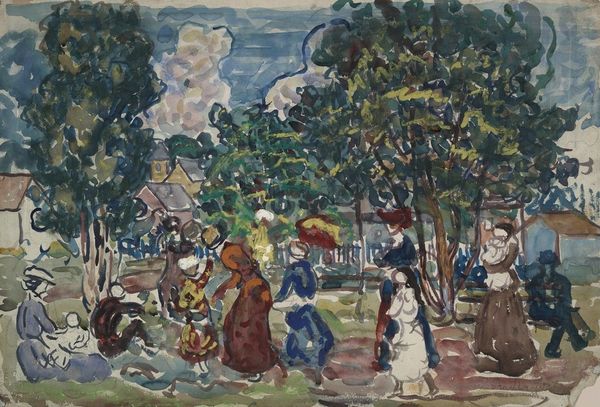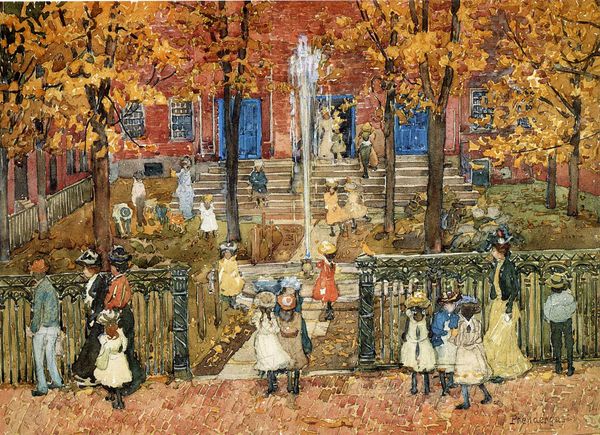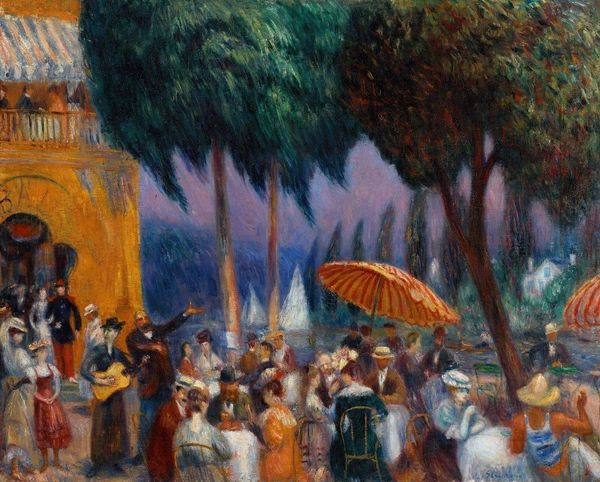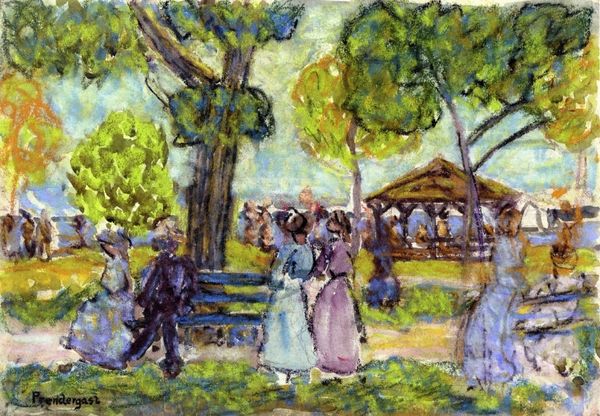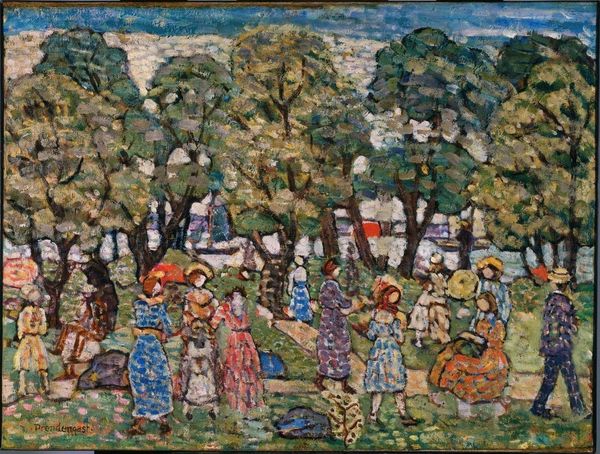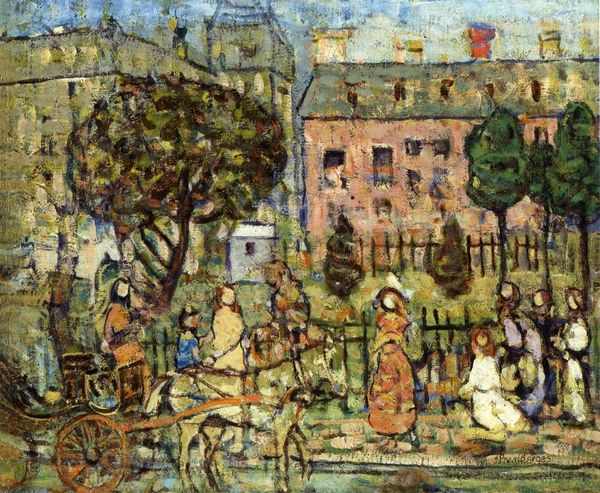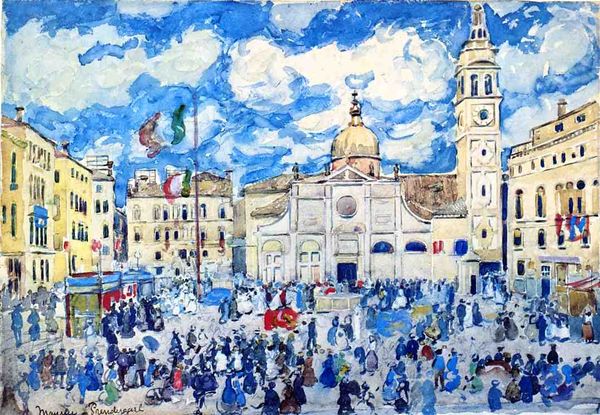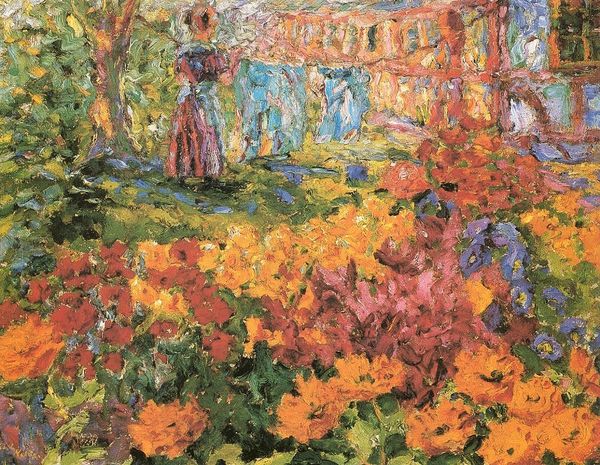
Dimensions: 37.15 x 53.98 cm
Copyright: Public domain
Curator: I find myself immediately drawn into this bright tableau of figures inhabiting the famous Italian city, captured in watercolor on paper. The artwork, titled "Venice", was completed by Maurice Prendergast in 1912. What's your first take on this piece? Editor: It’s ebullient. The washes of watercolor create an airy feeling. It looks like a very precise vision, very celebratory and light-filled. All the hats give a feeling of festivity to the painting. It’s like a parade, the ritual of fashion on display. Curator: Absolutely, I can see that festive read. Thinking about the historical context, it's worth remembering that Prendergast was associated with the American Impressionists and later the Post-Impressionist movement. His unique style, a mosaic-like application of paint, breaks with many art canons but perfectly conveys the vibrant life and leisure of its wealthy residents. This emphasis also highlights the socioeconomic divides present in Venetian society during the early 20th century. It focuses on consumption and class dynamics within the genre painting framework. Editor: That is such an interesting point when viewing the hats again. They become symbols, right? The clothing and those large hats aren’t merely decorative; they also hint at status and cultural norms around feminine representation in art and culture. Hats speak of the culture of the period in Venice and its connection to the cultural values it promoted. Curator: I agree completely. We need to read into that fashion symbol as a social status and power emblem to unveil how Prendergast captured not just the beauty, but the society inhabiting the city. It is also crucial to question, why did he choose such an obviously privileged view of Venice as subject matter? Whose experiences does this highlight, and at whose expense? Editor: Exactly! These types of questions push us to read deeply, right? Now I view those buildings also with questions: are they witnesses of changing values or stage props for the social elite's display? Curator: Food for thought, indeed. Understanding how fashion, architecture, and public spaces operate as carriers of identity can illuminate the power dynamics within such scenes, helping us think critically about who gets represented and how, in early 20th-century urban landscapes. Editor: It encourages reflection, both on Venice's historical memory and our present perspectives of these images. Thank you for unraveling Prendergast's Venice through that complex prism.
Comments
No comments
Be the first to comment and join the conversation on the ultimate creative platform.

